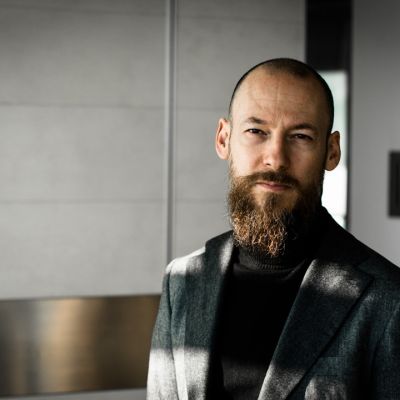Millions of Americans try to prevent hair loss every day. While it’s normal to shed 50 to 100 hairs a day, noticing more hair in your brush or shower drain, or feeling your ponytail get thinner, might be signs of something more: hair miniaturization. There are also genetic factors that cause male or female pattern baldness, also known as androgenetic alopecia, and hair miniaturization, or thinning of the hair follicles. Without intervention, your hair loss will worsen over time.
If you notice any of the signs below, it’s time to act now. The sooner you act, the more hair loss solutions you’ll have.
Understanding Hair Miniaturization
Hair miniaturization is a gradual process where hair follicles shrink over time, producing finer, shorter hairs. Left unchecked, these follicles may eventually stop producing visible hair altogether. This phenomenon is most often linked to androgenetic alopecia (also known as male or female pattern baldness), but it can also result from hormonal changes, aging, or other health factors.
Think of it this way: once-thick strands become thinner, weaker, and more fragile, leading to an overall reduction in hair density and volume. You may notice your hair feeling less full, more prone to breakage, or struggling to grow as long as it once did.
Signs You Might Be Experiencing Hair Miniaturization
Recognizing hair miniaturization early is key to addressing it effectively. Watch for these common signs:
- Widening part: A widening part is often the first sign of hair loss, especially for women. When your hair starts to thin out, you may notice more scalp showing around your part.
- Excess shedding: The average person sheds 50 to 100 hairs per day. If you are shedding more than the average amount, then your hair may be starting to thin. If you notice more and more hair in the drain or on your brush, it may be time to take action.
- Receding at the hairline and temples: Hair typically recedes at the hairline for men, while women see hair receding around their temples. The hair around your hairline or temples may be shorter where the hair loss is occurring. This is called hair miniaturization. When a hair follicle is beginning to become inactive, the hair it generates becomes thinner and shorter until eventually, the follicle stops producing new hair.
- Changes in hair texture and density: Hair may become finer, frizzier, or less voluminous, and you may feel your ponytail isn’t as thick
As hair spends less time growing and more time shedding, follicles shrink and produce weaker hairs. This ongoing cycle leads to a visible decrease in fullness and length.
What Causes Hair Miniaturization?
Several factors contribute to hair miniaturization:
-
Genetics: Your inherited genes play a major role in determining whether you’ll experience androgenetic alopecia.
-
Levels of Dihydrotestosterone (DHT) – DHT is the primary hormone associated with the miniaturization of hair follicles. Certain hairs have a genetic predisposition to fall out if exposed to high levels of DHT. DHT can cling to the follicle and cause it to shed prematurely. Then, it begins to shrink the follicle and finer hair regrows in its place.
-
Aging: Natural aging processes can accelerate follicle shrinkage and reduce hair density over time.
-
Other contributors: Stress, poor scalp health, nutrient deficiencies, certain medications, medical conditions, and even tight hairstyles can worsen thinning.
Treatment Options for Hair Miniaturization
Don’t panic—hair miniaturization progresses gradually, meaning early action can help slow or even reverse it. Several treatments have been FDA-approved to target miniaturization:
-
Minoxidil: A topical treatment that stimulates hair growth by boosting blood flow to shrinking follicles.
-
Finasteride: An oral medication that lowers DHT levels, reducing the hormone’s impact on hair follicles.
-
Hair transplantation: In more advanced cases, healthy follicles from the back or sides of the scalp can be transplanted to thinning areas for fuller coverage.
Additional therapies may include laser treatments, scalp care solutions, or non-surgical hair restoration options tailored to your hair health.
Solution
Hair loss treatments may be effective. However, in some cases, only surgical hair restoration can restore healthy follicles. Hairs are taken from areas on the back and sides of the head that are not sensitive to DHT. These hairs are then transplanted into the balding areas.
What should you do if you’re noticing one or more early signs of hair loss?
Talk to your doctor to make sure there isn’t an underlying condition causing your thinning. Then, schedule a free, no-obligation, 10-point hair health checkup with a Trichoview® hair and scalp analysis at HairClub. The Trichoscope magnifies the hair and scalp so a hair health expert can see hair shaft thickness and density at the follicular level. We’ll recommend a time-tested, proven solution to get back the hair you love, quickly.
At your appointment, you’ll receive:
- A free hair and scalp analysis
- A personalized report detailing your current hair health and the condition of your scalp
- A customized treatment plan with your solution recommendation
- One-on-one time with a hair health expert who can answer your questions
- Advice on how to style your hair to help you look your best
- A private consultation room, because we understand that regaining the hair you love is personal
- A warm, welcoming environment (including complimentary refreshments) where you can feel comfortable being yourself
Since 1976, HairClub has helped more than 600,000 clients love their hair and live their lives.
Book a FREE consultation today and discover for yourself how a full head of hair can help you live life to the fullest!
The information presented herein is general in nature and for informational purposes only. The exact cause of hair loss can only be determined by a medical professional.





